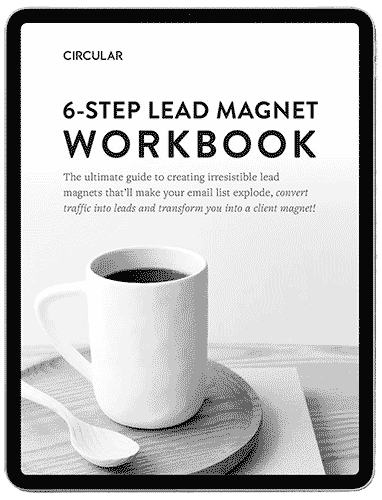What are ETFs?
Before deciding what ETFs to have, you should have an understanding of what they are.
An ETF is an exchange-traded fund. This is a collection of all types of investments that are packaged together for sale on the stock market. An ETF allows you to invest in an industry without having to pick THE stock that is going to make you money. ETFs offer some of the lowest costs and highest returns among other investment vehicles.
READ MORE: ETFs versus Mutual Funds: Which Should You Be Investing In?
DISCLOSURE: THIS POST CONTAINS REFERRAL LINKS, MEANING I GET A COMMISSION IF YOU DECIDE TO MAKE USE OF MY LINKS, AT NO COST TO YOU. SEE DISCLAIMER PAGE FOR MORE INFORMATION.
What is the difference between an ETF & an index fund?
While there are some similarities between ETFs and index funds, ETFs tend to have a lower barrier of entry for new investors. There is no minimum investment required. You just have to have enough to buy one share. Many investment platforms allow you to purchase fractional shares so you can buy in no matter how much money you have.
READ MORE: ETFs versus Mutual Funds: Which Should You Be Investing In?
Are ETFs a good investment?

Yes! ETFs allow you to invest while taking the pressure off picking the RIGHT stocks. So rather than you making the choice of what you invest in, you leave it up to people whose job it is to choose the right stocks. So instead you pick the funds that are in line with your financial goals and routinely invest.
READ MORE: How To Create A Routine To Get Results You Want
What ETF to invest in for beginners?
If you follow the same principles found in The Simple Path to Wealth, an ETF everyone should have is VTI. VTI is an ETF that tracks the entire US stock market. So within it, there are large-, mid-, small-, and micro-cap stocks.
READ MORE: Investing with Stash – Great App for Beginner Investors
How to Invest in ETFs
- Open an investment account that offers ETFs as a product option.
- Add money to your account. This is also known as funding your account.
- Invest the money. Look for words like trade or buy and enter the ETF ticker (name) as well as how much you plan to buy.
- Confirm the purchase and BOOM! You’re an investor.
READ MORE: Investing with Stash – Great App for Beginner Investors
Can you get rich from ETFs?

Absolutely! But you need a strategy.
- Choose a goal. Ask yourself how much you need and by when. If you have trouble deciding how much you need, check out THIS blog post.
- Create a plan. Use a calculator like this to determine what you have to invest to make this plan work. It asks for an interest rate. Six or seven percent can be used as a conservative growth rate in the stock market.
- Implement and maintain the plan. Adjust as needed over time.
If you want to get rich faster than you can with the amount of money you’re making now, you’ll want to look into increasing your income.
READ MORE: How To Take Steps Toward Financial Freedom Without Being Rich
Which ETFs Should Be in Your Portfolio?
That depends on what you’re interested in investing in. There are some general ones that come highly recommended in the personal finance space.
- VTI (Vanguard Total Stock Market Fund): this ETF captures all the publicly-traded U.S. companies. If you decide to purchase this ETF, then you are choosing to buy a piece of every single U.S. company that is bought and sold in the stock market.
- BND (Vanguard Total Bond Market Fund): this ETF provides broad exposure to the U.S. bond(& taxable) market. Bonds are used to hedge risk; the thought is that it goes down when the rest of the stock market goes up. So this is a great solution for those who want some conservative investments but are unsure which stocks to invest in.
- SPY (SPDR S&P 500 ETF Trust): this ETF tracks the S&P 500. These include the top 500 companies in the U.S.
- VNQ (Vanguard Real Estate Index Fund): this ETF tracks the performance of publicly traded REITs. This is a great option for those who want to invest in real estate but don’t want to go through the process of buying and/or selling homes.
- VXUS (Vanguard Total International Stock Index Fund): this ETF provides broad exposure to stocks issued by companies outside of the U.S. Some people may want to add this to their portfolio to increase diversity. Most of the other ETFs listed have overlaps where some of the same stocks can be found. This one is specifically outside the U.S. which guarantees no overlap.
READ MORE: Investing with Stash – Great App for Beginner Investors
Creating a Portfolio of ETFs That Works for You
Now does this mean you have to have EVERY one of these ETFs in your portfolio in order to have a successful portfolio? No.
The investment platform you choose can alter which of these ETFs you even have available to you. In this case, you would have to choose alternate ETFs that line up with your investment plan.
You may want to be riskier or more conservative than the options discussed here. Keep in mind though, that the more conservative your choices, the less growth you can expect to see but less volatility. On the other hand, the riskier your portfolio, the greater the volatility, and the returns are usually higher.
So in conclusion, ETFs are a great investment choice. You have a wide array of choices but the ones discussed above can be a great start for an investor. You can use them to provide a foundation or keep it simple and only invest in one or two ETFs.
If you choose the simple route, you definitely want to check out The Simple Path to Wealth. J.L. Collins wrote this book to help his child learn how to invest once she became interested in investing. Because he wrote it this way, this book is very easy to understand and apply.


One Response